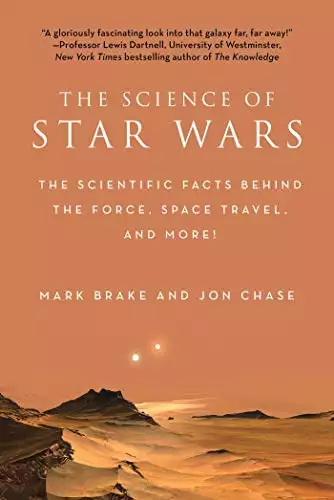Synopsis
Star Wars takes place in a long time ago in a galaxy far, far away, but the science used by Luke Skywalker, Kylo Ren, Han Solo, Chewbacca, Princess Leia, and the rest are rooted in the technology and physics we have here on earth. What is possible and what is not? Capturing the imagination and hearts of crowds worldwide, Star Wars is a fantastic feat of science fiction and fantasy. The Science of Star Wars addresses 50 topics that span the movies’ universe such as battle technology, alien life, space travel, etc. You’ll find fascinating explorations of the physics of Star Wars, its plausibility, and more. The perfect Star Wars gift for fans of the saga, this book addresses many unanswered, burning questions, including: How long before we get a Star Wars speeder off the ground? What exactly is the Force? How could Kylo Ren stop a blaster shot in mid-air? How could we live on a gas giant like Bespin, or a desert planet like Tatooine? Nature versus nurture: How does it play out in the making of Jedi? How much would it cost to build the Death Star? And much more! We marvel at the variety of creatures and technology and the mystery behind the force. But how much of the Star Wars world is rooted in reality? Could we see some of the extraordinary inventions materialize in our world? This uncomplicated, entertaining read makes it easy to understand how advanced physics concepts, such as wormholes and Einstein’s theory of relativity, apply to the Star Wars universe. The Science of Star Wars explains to non-technical readers how physics and fantasy might merge to allow for the possibility of interstellar travel; communication with foreign but intelligent lifeforms; human-like robots; alien planets fit for human life; weapons and spacecraft such as laser guns, light sabers, and the Millennium Falcon; and Force-like psychokinetic powers. In the 21st Century, we’re on the edge of developing much of the technology from “a long time ago, in a galaxy far, far away”… These fantasies aren’t as impossible as you might think! Written for every fan of George Lucas’s films, you don’t need to be a Jedi or an astrophysicist at NASA to appreciate all of Mark Brake and Jon Chase’s fun and informative analysis of this classic series in The Science of Star Wars . Prepare your mind to make the jump to light speed and find out about the facts behind one of our favorite modern epics!
Release date: November 15, 2016
Publisher: Racehorse
Print pages: 272
* BingeBooks earns revenue from qualifying purchases as an Amazon Associate as well as from other retail partners.
